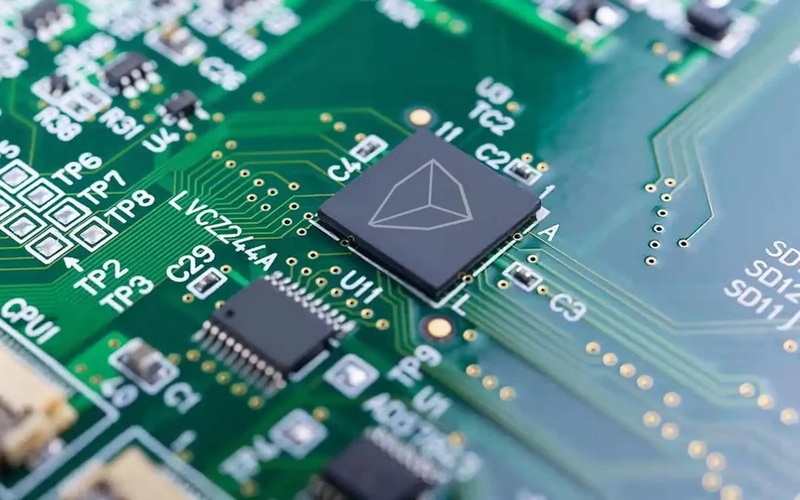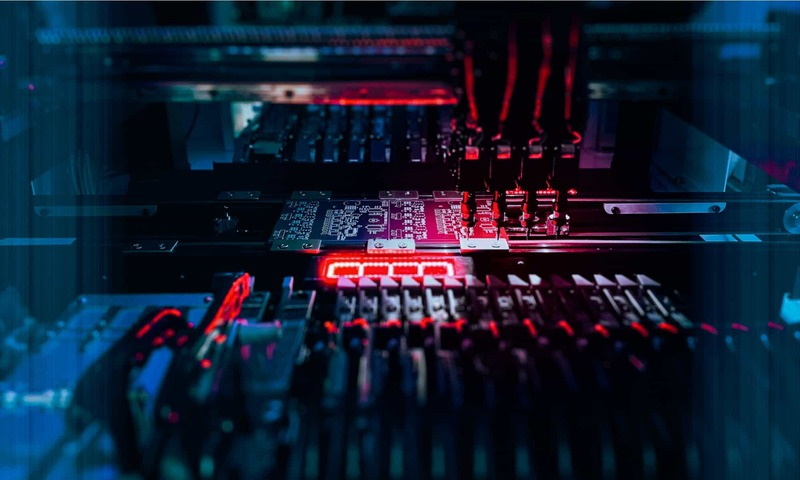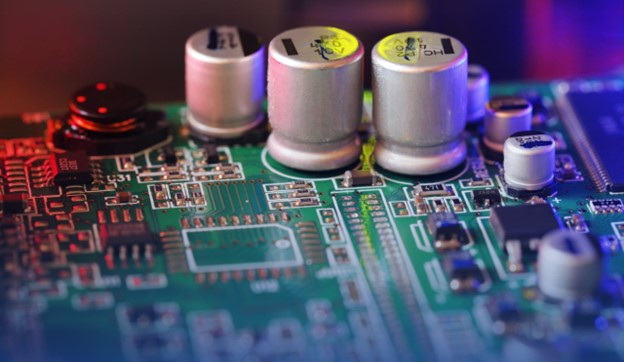Content Menu
● What is Surface Mount Technology (SMT)?
● Advantages of SMT Technology
>> 1. Miniaturization and High Component Density
>> 2. Enhanced Electrical Performance
>> 3. Cost-Effectiveness and Manufacturing Efficiency
>> 4. Improved Reliability and Mechanical Performance
>> 5. Design Flexibility
● Applications of SMT Technology
● SMT Side PCB Assembly: Maximizing Space and Performance
● SMT vs. Through-Hole Technology
● Challenges and Considerations in SMT
● Future Trends in SMT Technology
● Conclusion
● FAQ
>> 1. What is SMT side PCB assembly and why is it important?
>> 2. How does SMT improve electrical performance compared to through-hole technology?
>> 3. What types of electronic devices commonly use SMT?
>> 4. Can SMT assembly handle complex PCB designs?
>> 5. What are the main challenges of SMT technology?
Surface Mount Technology (SMT) has become the backbone of modern electronics manufacturing, revolutionizing how printed circuit boards (PCBs) are assembled and enabling the creation of smaller, faster, and more reliable electronic devices. This article explores why SMT technology is essential in today's electronics industry, emphasizing its impact on PCB design, manufacturing efficiency, electrical performance, and the broad range of applications it supports. Throughout, we will highlight the importance of SMT side PCB assembly, a key feature that maximizes component density and device functionality.

What is Surface Mount Technology (SMT)?
Surface Mount Technology refers to the method of mounting electronic components directly onto the surface of PCBs, as opposed to inserting component leads through holes (through-hole technology). SMT uses smaller components called Surface Mount Devices (SMDs), which are soldered onto flat pads on the PCB surface using automated processes such as solder paste application and reflow soldering.
The transition from through-hole to SMT began in the late 20th century as electronic devices demanded smaller sizes and higher functionality. SMT components come in various shapes and sizes, including resistors, capacitors, integrated circuits (ICs), and connectors, all designed for surface mounting. This technology fundamentally changed PCB assembly by allowing components to be placed on both sides of the board, known as SMT side PCB assembly, significantly increasing the complexity and capability of electronic products.
Advantages of SMT Technology
1. Miniaturization and High Component Density
One of the most significant advantages of SMT technology is the ability to miniaturize electronic devices. SMT components are significantly smaller than their through-hole counterparts, enabling designers to place more components per unit area on a PCB. This high density is crucial for compact, lightweight devices like smartphones, tablets, and wearable technology.
SMT side PCB assembly allows components to be mounted on both sides of the board, effectively doubling the available space. This capability is essential in modern electronics where space is at a premium. By utilizing both sides of the PCB, manufacturers can create highly sophisticated circuits without increasing the overall size of the device. This is particularly important in mobile devices, medical implants, and aerospace electronics, where every millimeter counts.
2. Enhanced Electrical Performance
Shorter lead lengths in SMT reduce parasitic inductance and capacitance, which improves signal integrity and reduces signal delay. This is especially important for high-frequency and high-speed circuits, where SMT provides superior electrical performance compared to traditional methods.
The reduced parasitic effects lead to lower electromagnetic interference (EMI) and better noise immunity, which are critical factors in sensitive applications such as telecommunications and medical devices. Furthermore, SMT components have better thermal characteristics, allowing for improved heat dissipation and thus enhancing the overall reliability of the electronic system.
3. Cost-Effectiveness and Manufacturing Efficiency
SMT assembly is highly automated, reducing labor costs, assembly time, and the potential for human error. Automated pick-and-place machines and reflow ovens enable faster production cycles and higher throughput, making SMT ideal for mass production. Additionally, fewer drilled holes in PCBs lower manufacturing complexity and cost.
The automation of SMT processes also leads to consistent quality and repeatability, which are vital for large-scale manufacturing. Reduced material waste and faster prototyping cycles further contribute to cost savings. The ability to produce complex boards quickly and efficiently helps manufacturers meet the growing demand for consumer electronics and industrial products.
4. Improved Reliability and Mechanical Performance
SMT solder joints are robust and perform well under mechanical stress and thermal cycling. The automated alignment during soldering corrects minor placement errors, resulting in consistent, high-quality connections that enhance product durability.
Because SMT components are smaller and lighter, they exert less mechanical stress on the PCB, reducing the risk of damage during operation or handling. This reliability is crucial in automotive electronics, aerospace, and military applications where failure is not an option.
5. Design Flexibility
SMT supports complex PCB layouts, including multi-layer boards and fine-pitch components. The ability to mount components on both sides of the PCB (SMT side PCB) allows for innovative designs that optimize space and functionality in modern electronics.
Designers can now implement more sophisticated circuits with higher pin counts and tighter tolerances. SMT also supports a wide variety of component types and packaging styles, giving engineers the freedom to choose the best components for their application without being constrained by assembly limitations.
Applications of SMT Technology
SMT technology is pervasive across various industries due to its versatility and performance benefits:
- Consumer Electronics: Smartphones, laptops, tablets, wearable devices, and smart home appliances rely on SMT for compactness and functionality. The rapid pace of innovation in consumer electronics would be impossible without SMT enabling miniaturization and high-density PCB layouts.
- Automotive Electronics: Engine control units, infotainment systems, advanced driver-assistance systems (ADAS), and safety features use SMT for reliability and miniaturization. SMT side PCB assembly allows automotive electronics to meet stringent space and durability requirements.
- Medical Devices: Implantable devices like pacemakers, hearing aids, and diagnostic equipment require the precision and reliability SMT provides. The small size and high reliability of SMT components are essential for life-critical applications.
- Industrial Equipment: Robotics, automation systems, and control panels benefit from SMT's robustness and high component density. SMT enables complex control circuits in compact spaces, improving industrial efficiency.
- Telecommunications: Routers, switches, and optical networking equipment depend on SMT for high-speed performance and compact designs. SMT technology supports the high-frequency signals and dense circuitry needed in modern communication networks.
- Renewable Energy and Transportation: SMT is used in solar panels, wind turbines, and intelligent transportation systems for efficient control and connectivity. The reliability and miniaturization offered by SMT help optimize energy harvesting and management systems.

SMT Side PCB Assembly: Maximizing Space and Performance
One of the defining features of SMT is the ability to mount components on both sides of a PCB, known as SMT side PCB assembly. This technique maximizes the use of board real estate, allowing for higher component density without increasing the PCB size. It is particularly valuable in applications where space is at a premium, such as mobile devices and compact industrial electronics.
SMT side PCB assembly also supports more complex circuit designs and enhances electrical performance by reducing the length of interconnections. Placing components on both sides can improve signal routing and reduce the number of PCB layers needed, which in turn lowers manufacturing costs.
Additionally, SMT side PCB assembly requires precise process control because the soldering of components on the second side typically involves a second reflow process or selective soldering techniques. Despite these challenges, the benefits in terms of miniaturization and performance make SMT side PCB assembly a standard practice in modern electronics manufacturing.
SMT vs. Through-Hole Technology
| Feature | SMT | Through-Hole Technology (THT) |
| Component Size | Smaller, compact | Larger, bulkier |
| Component Mounting | Mounted on PCB surface | Leads inserted through PCB holes |
| Component Density | High, supports double-sided assembly | Lower, limited by hole placement |
| Assembly Process | Automated, fast, cost-effective | Manual or semi-automated, slower |
| Electrical Performance | Superior, reduced parasitic effects | Lower, longer leads increase parasitics |
| Mechanical Strength | Good, reliable solder joints | Stronger mechanical bonds |
| Production Volume | Ideal for high-volume manufacturing | Better for prototypes or low volume |
| Cost | Lower for mass production | Higher labor and material costs |
While through-hole technology offers mechanical robustness and is easier to repair manually, SMT's advantages in size, cost, speed, and electrical performance make it indispensable for modern electronics manufacturing. SMT has largely replaced through-hole technology in consumer and industrial electronics, except in applications requiring extreme mechanical strength or high power handling.
Challenges and Considerations in SMT
Despite its many advantages, SMT requires precise manufacturing equipment and expertise. The small size of components demands high accuracy in placement and soldering. Automated pick-and-place machines must be calibrated carefully to handle fine-pitch components and tiny SMDs.
Repair and manual rework can be more challenging compared to through-hole components because of the small size and dense placement. Specialized tools and skilled technicians are required for troubleshooting and repairing SMT side PCB assemblies.
Thermal management is another consideration; while SMT components generally dissipate heat well, densely packed SMT side PCB assemblies can create hotspots. Designers must carefully consider thermal vias, heat sinks, and PCB material properties to ensure reliable operation.
Additionally, the choice of solder paste and reflow profiles is critical to avoid defects such as tombstoning, solder bridging, or insufficient solder joints. Quality control techniques like Automated Optical Inspection (AOI) and X-ray inspection are commonly employed to ensure assembly integrity.
Future Trends in SMT Technology
The evolution of SMT technology continues with developments such as:
- Ultra-fine pitch components: As device complexity grows, SMT components with pitches below 0.3 mm are becoming common, pushing the limits of assembly precision.
- 3D packaging and integration: Combining SMT with advanced packaging techniques like System-in-Package (SiP) and Multi-Chip Modules (MCM) enables even higher functionality in smaller footprints.
- Flexible and wearable electronics: SMT processes are adapting to flexible PCBs and substrates, expanding applications in health monitoring and IoT devices.
- Advanced materials: New solder alloys and PCB materials improve thermal and mechanical performance, supporting more demanding applications.
- Automation and AI: Machine learning and AI-driven inspection systems enhance defect detection and process optimization, increasing yield and reducing costs.
These trends ensure SMT technology will remain central to electronics manufacturing for years to come.
Conclusion
Surface Mount Technology is essential for modern electronics because it enables miniaturization, enhances electrical performance, reduces manufacturing costs, and supports high-volume automated production. SMT side PCB assembly further optimizes space utilization, allowing for compact, high-density circuit designs critical in today's consumer electronics, automotive, medical, industrial, and telecommunications sectors. As electronic devices continue to evolve toward smaller, faster, and more reliable forms, SMT remains the cornerstone technology driving innovation and efficiency in PCB assembly.

FAQ
1. What is SMT side PCB assembly and why is it important?
SMT side PCB assembly refers to mounting components on both sides of a printed circuit board, effectively doubling component density and enabling more compact and complex designs essential for modern electronics.
2. How does SMT improve electrical performance compared to through-hole technology?
SMT components have shorter leads and reduced parasitic inductance and capacitance, which minimizes signal delay and distortion, making SMT superior for high-frequency and high-speed applications.
3. What types of electronic devices commonly use SMT?
SMT is used widely in consumer electronics (smartphones, laptops), automotive systems, medical devices, industrial automation, telecommunications equipment, and renewable energy systems due to its miniaturization and reliability benefits.
4. Can SMT assembly handle complex PCB designs?
Yes, SMT supports complex and multi-layer PCB layouts, including fine-pitch components and double-sided assembly, offering great design flexibility and functionality.
5. What are the main challenges of SMT technology?
Challenges include the need for precise automated equipment, difficulty in manual rework due to small component size, and the requirement for skilled manufacturing processes to ensure quality and reliability.




















